I love spending quality time in God’s creation, the Great Outdoors. I also love capturing those moments with pictures and words. Stated another way, I love “framing time” with a camera and stories. I would like to inspire others to seek their own outside adventures and live an active life with no regrets, Above all else, my main goal is to see God’s hand in everything and share it. Welcome !
CONTROL
CONTROL


A high overcast cloud layer nearly 8000 feet above the ground dispersed a softened and subtle light over the rugged western landscape below. Wispy lonesome clouds drifted aimlessly beneath the overcast layer as if searching for purpose, while other more mature clouds gathered and started a bombardment campaign against the high desert floor. Scattered like hay bales in a field, the moisture laden clouds released their payload, but the dry arid air beneath thwarted the attack. The evaporating curtains of virga swirled down below each cloud in ghostly patterns of light and dark gray that offered a stunning backdrop to the already hauntingly wild and picturesque scene. Deeply eroded slot canyons with shades of reddish-orange and reddish-yellow sandstone provided a labyrinth of texture and color that added a hint of untamed formidability to the setting. Ahead, through the windshield, the dark hues of blues and greens pockmarked with white described rising terrain with stubborn patches of snow clinging to shaded areas. Even higher, the nearly twelve thousand foot peaks morphed to pure white as the deepening snow from the last storm blanketed everything.
With a quick glance, the pilot scanned his instruments. Noting his altitude and eyeing the mountain range ahead, he altered course slightly south.
The tall dark haired pilot, Colonel Lorin Johnson, sat comfortably in the left seat. He was obviously at home in the air having spent many hours slipping the surly bonds of Earth. Confidently in command, his handsome face showed little sign of worry as he aptly flew the C-45F Expeditor westwards. Also known as a Twin Beech, the two-engined tail wheel aircraft provided a solid platform for light cargo operations as well as pilot training and cross country executive movement. It’s two Pratt and Whitney R-985 engines produced 450 horsepower each, making the aircraft capable of cruising at over 200 miles per hour.
“A grand sight,” remarked an excited Staff Sergeant from the copilot’s seat, named Billy Nash.
Colonel Johnson stole a glance at the young man and grinned. “It sure is Billy.” He paused as he turned his head to watch the precipitous ground slip under the left wing. “It truly is.”
“What was it like?” asked Billy hesitantly after a minute of silence.
“The War?” responded Johnson.
“Yes, Sir.” nodded Billy. “I heard you personally flew thirty seven bombing missions over Germany.”
Johnson nodded and then pressed his lips tightly together. “Nervous tranquility followed by chaotic brutality. Each mission climaxed with flak pockmarked skies, swarming enemy fighters, crippled aircraft, and lost crews.”
“A heavy price,” acknowledged Billy solemnly as he lowered his eyes.
“Prayer-filled anxiety eclipsed by hell,” sniffed Johnson as he consciously dammed the reservoir of memories threatening to spill out.
Acknowledging Johnson’s reluctance to relive the past, Billy changed the subject. “You still have family in Utah?”
Johnson nodded. “It will be good to see all of them. It’s been a few years.”
“How much longer?”
“A little under an hour.”
Billy grinned and scanned the snow capped peaks dominating the majority of the windshield. Straight ahead, a saddle between the tallest mountains offered clear passage but looked deceivingly close. Like horned giants lurking along a narrow forested trail, the mountains threatened to reach out and snatch the sleek fuselage of the Twin Beech as it slipped through the pass. “Thanks for bringing me along. Oklahoma boys like me don’t get views like this.”
Johnson flashed a dashing smile. “It’s too beautiful to see alone. I just wish you were a prettier date.”
Billy laughed. “I’ve got straight teeth. That’s worth something!”
Johnson chuckled. “Yeah. Pretty good for an Okie.”
Suddenly, the right engine hesitated and then surged. Johnson quickly scanned the instruments. Before he could diagnose the problem, the left engine sputtered.
“What is it?” yelled Billy with serious concern etched across his forehead.
“Fuel,” snapped Johnson as he opened the engine fuel primer handle. Both engines sputtered and then lost power. Sickeningly, at the worst possible time in the worst possible location, the comforting throb of the Pratt and Whitney radial engines fell silent. Just as the C-45F started to overfly the saddle between the mountains, the aircraft’s nose tipped down and the altimeter began to unwind. With acute awareness of the terrain below, Johnson pulled back on the controls to hold altitude. Frantically, he hand pumped the fuel-starved engines while still trying to maintain altitude. The Twin Beech obeyed but not without giving away precious airspeed. The nose of the aircraft cycled up and down as the airspeed decayed further and further and Johnson pulled harder and harder. He desperately tried to get fuel to the engines and still keep flying the airplane. The rugged terrain below clawed at the underside of the aircraft. The stubborn engines refused to start. The controls started to feel mushy. The airspeed was barely enough to keep the aircraft flying. “Come on! Stay with me! Just a few more seconds,” Johnson’s mind screamed. The engines popped as fuel dribbled excruciatingly slow into the lines. Then the left engine coughed and sparked for only a moment. It was so close, but the wings couldn’t produce enough lift to counter the weight any longer. Suddenly, the right wing tip dropped, and the aircraft rolled over. The horned monsters, with their craggy and jagged features, seemingly stretched out to grab the aircraft. The hidden details of the pockmarked and rugged terrain peered ominously into the windshield. The Twin Beech with it’s occupants surrendered to the clutches of the merciless monsters. Torn and ripped apart, the aircraft fell into a foreboding lair of trees and rocks and exploded.
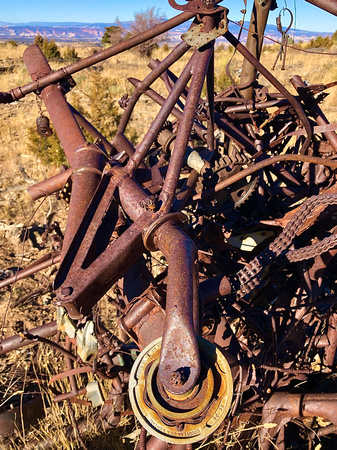



I’ve often wondered about “bad luck”. Honestly, I’ve been perplexed by it at times. It seems to just randomly appear at the worst possible moment and sabotage any and all plans made. It shows up as those unwelcome nuggets that drop into our lives at the most inopportune times. Everyone has experienced them. They are those little devils that pop up in life and make you wonder if God even cares. We’ve all heard about Murphy’s Law that goes something like “Anything that can go wrong will go wrong.” And, it would seem, that Murphy’s Law is astonishingly persistent and able to make things go wrong at the worst possible time. In fact, there are some days that the adage is so prevalent that it makes us regret even getting out of bed. I have heard those “bad days” called many things including the “bludgeonings of chance” in reference to a poem entitled “Invictus”, written by William Henley. In it he wrote,
“In the fell clutch of circumstance
I have not winced nor cried aloud.
Under the bludgeonings of chance
My head is bloody, but unbowed.”
Shakespeare made reference to “bad days” and “bad luck” by calling them “the slings and arrows of outrageous fate”.
Who hasn’t had their heads bloodied?
Who hasn’t been bruised by those slings? Who hasn’t been pierced by those arrows?
For example, a huge family vacation is planned and executed and then somewhere in the middle of Canada, one of the kids comes down with the measles. Are you kidding me? Or the furnace breaks down right when a major snowstorm is on the way and temperatures are forecasted to drop well below zero. Really? Or the sewer line backs up when there is a foot of snow outside and it’s 10 degrees outside. Do you think that would happen in the summer?
Life offers many more “slaps in the face” that include little gems like the family dog dying when you’re on vacation, a highly anticipated job offer is withdrawn, the car won’t start and you’re already late, you finally scrape enough money together to pay off the credit card and then another major expense comes along, construction makes you late for an extremely important appointment, your windshield gets broken the day after replacing it, or your arrow loses it’s nock when you goto full draw on a 350 class bull elk that is only twelve yards away (Yes, sadly, I experienced that heart-wrenching bludgeoning of chance. My head is still bleeding from that one!).
I mean, it’s not like you’re not doing your part. You’re working all the time. You’re busy trying to get things accomplished. You’ve planned ahead. You’ve practiced. You’ve studied. You’ve saved. You’ve tried to counter foreseeable problems that could bite you, and then out of nowhere, the most obscure thing rears it’s ugly head and lands right in the middle of your lap. Now, suddenly, all the plans made go out the window. More time and more money and not enough of either. Lost opportunity, disappointment, rage, stress, and frustration rule the day. Sound familiar?
Personally, I have never believed there is such a thing as “bad luck”. Proverbs 16:33 provides a general reason why I believe so.
“The lot is cast into the lap, but its every decision is from the Lord.”
Proverbs 16:33 NIV
But I would be lying if I said that I haven’t re-evaluated that opinion many times, especially on those “bad days” when everything unravels. It really makes me wonder; Is there such a thing as “bad luck” or is it mostly the perception of “life under the sun”? Asked another way; does everything that occurs, happen for a reason?
Those questions carry deeply embedded opinions. For those that have lost loved ones tragically, how could there be any good explanation for the hurt, pain, and sorrow? To say that things happen for a reason seems insensitive and impersonal in those cases. Is it possible that “bad luck” or “bad things” just happen by chance?
Really, all of these questions can’t be answered until another question is addressed. Is God sovereign? In other words, does God control everything. If He does, then “bad luck” does not exist. In that case, God orchestrates every event and detail in each of our lives. He may MAKE things happen or ALLOW things to happen, but ultimately He controls everything. Chance is not part of the equation. Is that possible or does our free will counter God’s sovereignty? Does our allowed “free will” cause “bad luck”?
Now, do you see why the idea of “bad luck” is so perplexing? It would take many pages to address all of the variables at play. It is a very deep and controversial subject which cannot be given justice with a blog. However, there is an interesting perspective wrapped up within the convoluted enigma that I would like to offer. It is called maintaining CONTROL.
I am never sure what I will find when I start researching an old airplane crash. Many times the research fizzles out before it even gets started. Dead ends, unreadable documents, vague pictures, rough terrain, forest fires, vegetation growth, thorough salvaging and recovery efforts, and souvenir hunters make finding old crash sites difficult. With most, there are no gps coordinates or directions to follow. As a result, hidden clues have to be ferreted out and applied to even come close to the general area. Then even more study and effort is required to pinpoint the wreckage if it still exists. I am never positive that I’ve found a crash site until I’m standing amidst the debris. That seems like a lot of effort for a bunch of aluminum and scrap metal scattered on a mountain side. However, just like most things in life, it’s not merely about the destination, but it’s more about the journey along the way. Invariably, no matter the crash or the circumstances, the journey to a crash site teaches me to reevaluate and reprioritize my own life. Simply speaking, life lessons are learned along the way, and standing amidst the wreckage forges an emotional sword that slices away arrogance and pride. Humbled by grace, life lessons are quickly solidified. Lorin Johnson’s crash is no different.
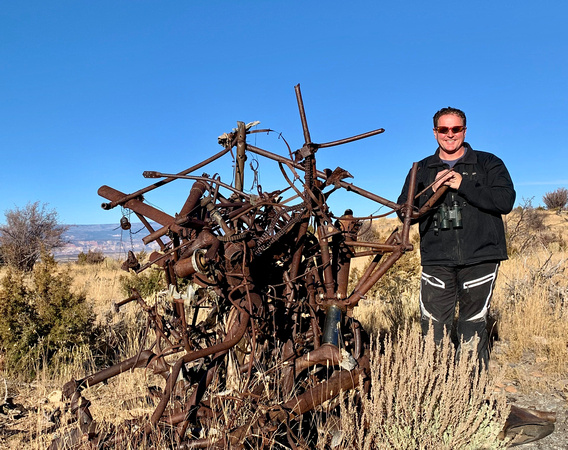

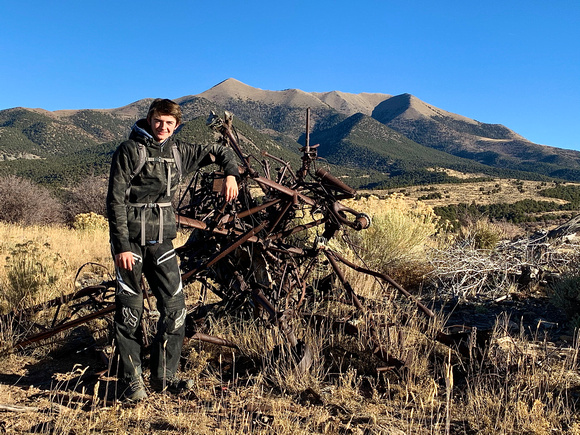

Lorin Lavar Johnson was a highly decorated World War II pilot. He was awarded the Purple Heart, the Distinguished Flying Cross, the Silver Star, the French Croix de Guerre, the Soldier’s Medal, and the Air Medal. He is recognized prominently in the Utah Aviation Hall of Fame. He was on active duty during the Korean War and was therefore listed as Killed In Action, although his crash occurred stateside. He was a hero that answered the call to the service of our country, and then, on November 30, 1950, he and his passenger paid the ultimate price due to unfortunate circumstances, bad timing, and loss of control.
After researching, finding (multiple attempts and many many miles in between - just ask my son), and finally standing at the crash site, I personally believe Lorin Johnson could have survived his “bad day” if he could have maintained control. It was very unfortunate where the fuel starvation occurred. Definitely an epic “bad day” with Murphy working overtime! With the noted locale, there wasn’t much Lorin Johnson could have done to prevent a crash. There just wasn’t enough time to get the engines restarted. But maybe he and his passenger could have survived a controlled crash. By stalling the aircraft into the trees in a nose-high controlled attitude, their survival rate would have been exponentially higher. However, that would have meant a completely different mindset - a commitment to crash (And who wants to do that?) Lorin Johnson wasn’t thinking that way either. He was desperately trying to save it and keep it flying. He came surprisingly close. But his “bad day” refused to yield. Low altitude, low airspeed, high terrain, high work load, stress, frustration, and distractions consumed all his thoughts and attention. The aircraft quit flying, rolled over, and succumbed to the unmerciful harshness of gravity. Tragically, Lorin Johnson lost control.
There is no way to prevent “bad days”. We can plan and prepare all we want, but unexpected interruptions will always occur. Hassles and problems will always lurk in the shadows, ready to pounce. However, there is a way to handle those “bad days” and deal with “bad luck”. No matter what happens, above all else, maintain CONTROL. Rage, frustration, disappointment, and stress do not rule us. We rule them. Maintaining CONTROL is about keeping our priorities straight. Seriously, what is really important? Maintaining CONTROL is about keeping the right perspective.
Throughout the Bible, there are many stories that demonstrate the concept of maintaining CONTROL. In Genesis, Joseph was betrayed by his brothers, thrown into a pit, and sold into slavery. I would classify that as a “bad day” and yet Joseph later stated to his brothers, “You intended to harm me, but God intended it for good to accomplish what is now being done, the saving of many lives.”
Genesis 50:20 NIV
In the Gospel of Luke, another story reminds us about priorities. Martha opened her home to Jesus. She busily made preparations and was completely distracted while her sister, Mary, sat at the Lord’s feet and listened. Martha became frustrated and angry and then complained to Jesus that she was doing all the work. Jesus responded, “Martha, Martha, you are worried and upset about many things, but few things are needed—or indeed only ONE. Mary has chosen what is better, and it will not be taken away from her.”
Luke 10:41-42 NIV
There once was a man named Simon of Cyrene that made a long and arduous journey from Cyrene on the north coast of Africa to Jerusalem. His religious pilgrimage to Jerusalem was inspired by the Passover season, and his plans included devoting much time to religious activities at the temple. Enroute to the temple, Simon found chaos erupting in the streets. Shouldering in for a closer look, he saw a beaten and bloody man staggering along carrying a heavy cross. Suddenly, a Roman soldier grabbed Simon and ordered him to carry the cross. Simon pulled back. He shook his head. He had no desire to be associated with the disgusting event. He didn’t want the man’s blood all over him. He cringed and pleaded with the soldier to let him go on to the temple. Yet, the Roman soldier was adamant. “You will carry the cross!”
Simon reluctantly reached for the blood-stained cross. This is not what he had planned. “What a bad day,” he whispered under his breath as he shouldered the burden and followed the man to Calvary.
As scripture unfolds in the New Testament, there are obscure clues and hints concerning what later happened to Simon. What Simon thought initially to be his worst day filled with unplanned humiliation and deep frustration, he later learns was his highest honor. He learns there is much more to this man that was hung on the cross and crucified. “He truly was the Son of God!” Simon is there during Pentecost and is saved, and then returns to Africa where he regales his wife with the entire story. She comes to know the Lord and becomes a second mother to the apostle Paul. Simon’s sons, Alexander and Rufus, accept the Good News of the Gospel and later become outstanding leaders in the early church in Rome. Was it really a “bad day” for Simon or was God orchestrating everything for the “good”?
I really think “bad days” and “bad luck” can be countered effectively by maintaining CONTROL which means that
Christ
Only
Needs
To
Rule
Our
Lives
Nothing else rules and nothing else matters. Rage, anger, frustration, resentment, disappointment, distractions, stress, and anxiety do not rule. Only Christ rules, and within that simple declaration, peace that surpasses understanding is found. Maintain CONTROL! If we keep that perspective and live that mantra, Murphy’s Law becomes an erroneous hypothesis that we can disregard. “Bad luck” is then just an opportunity to focus more intently on Christ in our lives.
In the Book of Numbers, the Israelites experienced an infestation of poisonous snakes in their camp. Many began to die so a bronze serpent was raised upon a pole. The Israelites were supposed to look to the serpent on the pole in order to survive the snakebites. At first glance, that story seems unrelated to the idea of maintaining CONTROL and keeping Christ first in our lives, but that bronze serpent on the pole foreshadowed Christ on the cross. When we get snake bit due to sin or experience “bad luck”, we are supposed to look to Christ and remember what He did for us upon the cross. That act of faith will restore us, and then we can boldly proclaim Romans 8:28;
“And we know that in all things God works for the good of those who love him, who have been called according to his purpose.”
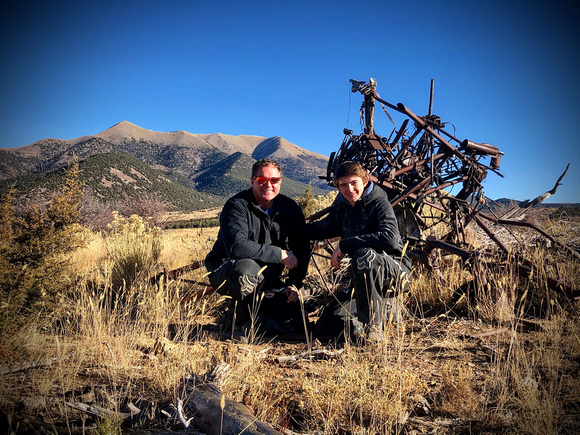

Get out there and enjoy the gift of life, and always remember that when the engines quit or threaten to flameout just maintain CONTROL.
Michelin Man
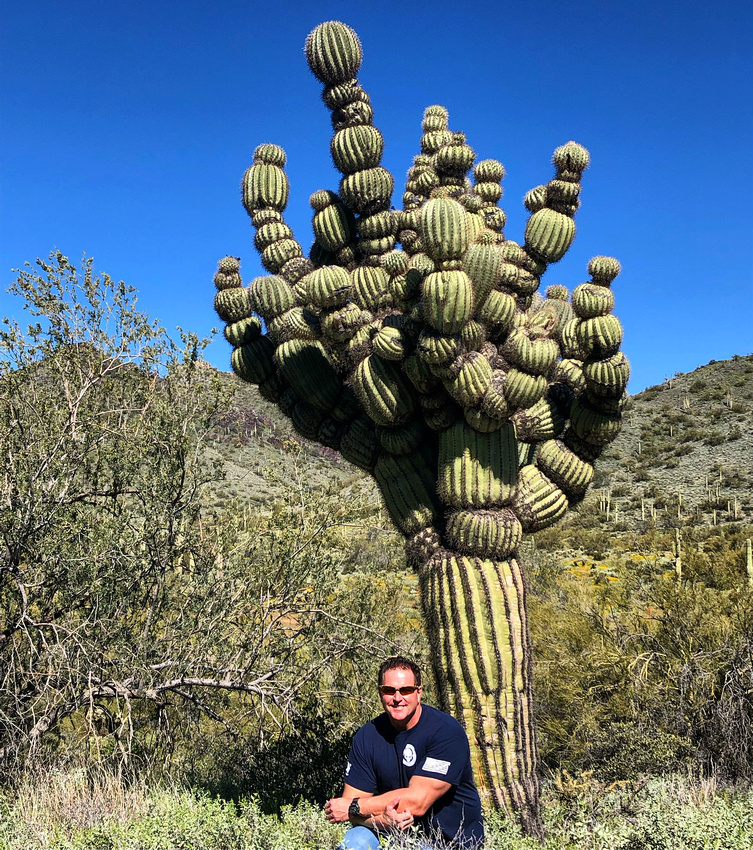

Michelin Man
An abundance of colors waved me forward as fluttering yellowish-gold and reddish-orange leaves ensconced the trail. Stubborn patches of lush green randomly appeared to offer a drenching overload of visual stimulation to an already breathtakingly beautiful high country dirt bike ride. The flow of the single track carpeted with dew-speckled aspen leaves had pegged my fun meter deeply into the addiction range. My thirst for adventure was steadily being quenched with every roll of the throttle and twist and turn in the trail. The crisp fall air interlaced with lingering summer and hints of winter assaulted my senses and forced giggles to erupt spontaneously behind my face shield. I was having fun. I was having a lot of fun, right up until I misjudged a hard cut and narrow turn and plowed my left foot into a tree. The pain raced up my leg and immediately overwhelmed me. My fun factor plummeted to zero. Initial thoughts cried broken foot, but a few stretches and flexes subdued my worst fears. Yet, the nerves in my big toe screamed for some attention. “Maybe just a fractured toe”, I finally surmised. Riding behind, my son stopped to check on me, but there wasn’t much he could do. I grimaced as I examined our plight. We were a long ways from home in the bottom of a deep canyon and my “shifter” foot was begging to be propped up and iced up. My son asked, “What now?”
I swallowed a couple of Advil and cringed. “We ride.”
The ride out was tough. I couldn’t shift very well. I was hurting. I couldn’t focus, and I had lost my nerve. The switchbacks didn’t go well as I proceeded to lay my bike over three more times on the climb out of the canyon. Finally, after several maddening attempts, I made it to the top. I was exasperated, pain-challenged, tired, and dirty. I protested and groaned my complaints loudly. My son offered some sympathy, and then he casually reminded me of a very important point. “At least you didn’t let your falls outnumber your get-back-ups.”
This is a picture of a “segmented” or “jointed” saguaro cactus affectionately called “Michelin Man”. I’m not sure anybody really knows what causes the jointed “Tinkertoy” appearance. I have heard “experts” say that environmental factors like hard freezes cause cell mutations that force the saguaro arms to stop growing and then start again. No matter the reason though, it is a fascinating occurrence in nature that doesn’t show up very often. In fact, the unique character of the “segmented” saguaro keeps it high on the seek-and-find list for many Sonoran desert hikers.
When I first went looking for “Michelin Man”, I expected my first reaction to be “interesting”. However, upon experiencing “Michelin Man” first hand, I found myself staring in wide-eyed fascination. It was much more than interesting. Personally, I felt like applauding “Michelin Man” and exclaiming “well done” to the Carnegiea gigantea because the mighty cactus exemplified epic persistence. Whether it was internal or external causes that hindered growth, it was obvious that the cactus simply refused to quit. Despite factors that pressured it to stop growing, it struggled through the resistance time and time again. And through it all, it developed a character worthy of visitation that far exceeds most ordinary saguaros. “Michelin Man” has a character that attracts hikers from all over the world simply because it never gave up. There is much that can be learned from the persistent desert dweller, “Michelin Man”.
It doesn’t really matter what we do or what we try to achieve. It doesn’t matter if it’s physical or spiritual. There will always be outside forces that are going raise their ugly heads and make us want to quit. There will be naysayers. There will be critics. There will be obstacles. There will be resistance. Some of it may even be self-inflicted. Maybe we failed horribly somewhere along the way, and we lost our nerve. Maybe we experienced pain along the trail. Maybe we are trapped in a quagmire of self-pity and shame. Maybe we just lost focus and fell down. Who cares! Get back up! Keep trying! Keep growing!
“But as for you, be strong and do not give up, for your work will be rewarded.””
2 Chronicles 15:7 NIV
Will it be fun making the climb? Will it be fun pushing through the pain? Will it be fun trying to grow again? Maybe. Maybe not. People have widely different ideas of fun and most of it depends on each individual’s perspective. One person’s mountain is another’s motivation. No matter the enjoyment factor, however, the resistance we meet and feel on our way to the goal will develop some outstanding character as long as we don’t give up!
Although not intentional, James A. Michener described the “Michelin Man” cactus very well when he penned, “Character consists of what you do on the third and fourth tries.” Notice, in his statement, that character is dependent on multiple tries. Most of the time, one-and-done will not produce that “special character”.
I had to admit with a nod of agreement and a little bit of fatherly pride, my son was correct. It didn’t matter how many times I fell. It mattered more that my falls didn’t exceed my “get-back-ups”. In life, physically and spiritually, the only real failure, and the one we must avoid at all costs, is to not get back up.
“No amount of falls will really undo us if we keep on picking ourselves up each time. We shall of course be very muddy and tattered children by the time we reach home.........The only fatal thing is to lose one’s temper and give it up.”
– C.S. Lewis, in a letter to Mary Neylan, January 20, 1942
Hesperus
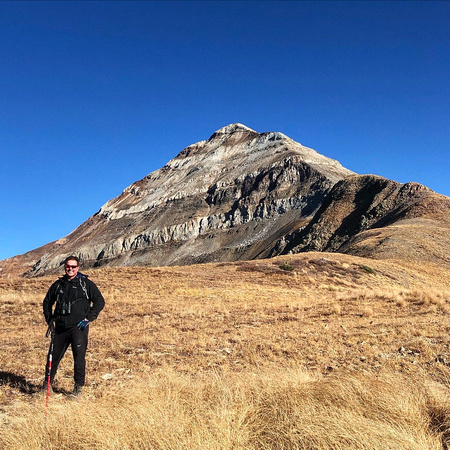

Hesperus
Ever since I was a little boy Hesperus Peak, stoically posed amid the La Plata Mountains of Colorado, has enthralled me. No matter where I’ve been, Hesperus Peak has always been the first to welcome me back to the area. Like a giant sentinel standing firm at it’s post, it reliably announces from afar that I’m almost home. At 13,237 feet, it stands out as the tallest and most obvious of the La Plata Mountains which sweep South from the rest of the mighty San Juan Mountains. There is contention whether Lavender Peak is taller, but there is little debate over which mountain dominates the landscape of Southwestern Colorado. Even the Navajo have long held Hesperus as one of their Sacred Mountains. It is the Northernmost Mountain overlooking their homeland as well.
Hesperus Mountain is not a fourteener; nor is it a centennial thirteener. As a result, it remains off the radar. It doesn’t demand technical gear therefore it doesn’t impress climbers and experienced hikers can usually find something much more elegant. So why climb it?
Part of the allure is the physical challenge. The Southern approach will test your endurance with about 4000 ft vertical and seven miles one way. Part of the allure is the navigational challenge. There is no established trail so route finding skills are a necessity. Part of the allure is the solitude. Very few people climb it because it has no claim to fame so it is very likely the serenity of silence will ring. But, for me personally, the real reason for climbing any mountain is always captured somewhere on the way up. I believe a mountain is only truly conquered when a person reaches the summit a better human being than when they started.
As I was navigating the long climb up the Western ridge, my son was following my trail. I never told him to follow my path up the steep slopes, but he did anyways. He trusted me to choose and lead the best route. If I had chosen a longer path, he would have followed. If I had chosen a dangerous path, he probably still would have followed.
French novelist René Daumal once penned in Mount Analogue, “Be ready to answer to your fellow men for the trail you leave behind you.”
In essence, no matter where we go in life, we will leave a trace of our passage. Even when we don’t intend to, there will be evidence of what trail we took through life.
High above tree line, I suddenly realized that I would be held accountable for the trail I left for my son to follow on the mountain and in life.
Somewhere near 12,500 feet, It became clear that I had better do my best to take the right path and leave a trail with no regrets.
At 13,000 feet, my son and I both felt we had a better understanding of ourselves and each other.
At 13,237 feet, my son and I truly conquered Hesperus Mountain!


The Horrors of War
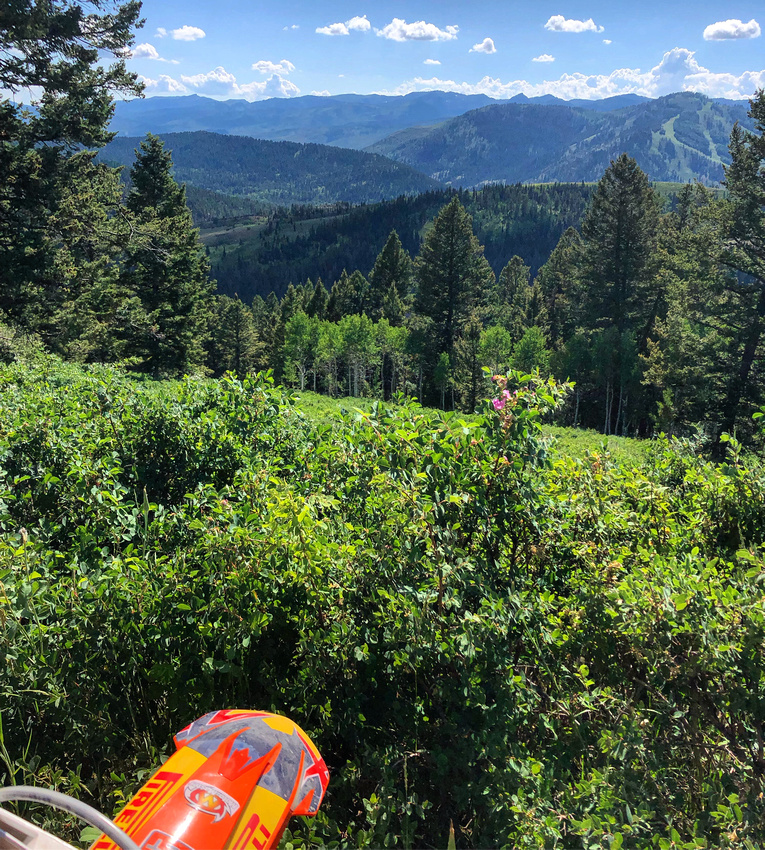

The Horrors of War
The scene below was full of wild, remote, and untamed beauty. Snow blanketed tree-lined ridges wiggled their way up to conspicuous towering summits before falling away again into deep foreboding canyons. Over and over the scene repeated itself as multiple mountain ranges slid underneath the wings. A young man watched the rugged terrain slip by with nervous apprehension as he was flown deeper into the vast wilderness. He knew very well the harshness and unforgiving nature of the mountainous winter lying hidden just beneath the surface of the fresh blanket of snow. He knew that deep snow brought about many dangers and high elevations brought sub-freezing temperatures and complete isolation. Self-reliance and adaptability were paramount to survival. He swallowed hard to rewet his parched throat. He didn’t look forward to what was coming. It was a mission he had been trained for, but was never really mentally prepared to undertake. It was a mission not to be taken lightly. He could possibly save lives or possibly lose his for nothing. There was no way to know until he was already committed. He could feel his muscles tightening as his anxiety pricked his nerves. Fear of the unknown loosely coiled around him and began to constrict. He glanced at his partner for a confident affirmation. He got none. Even in the cold drafty aircraft cabin, his partner was sweating bullets. Despite their mutual uneasiness, they were getting close to their destination. Time was short. The young man swallowed hard again as his breathing dramatically increased. Like a freight train bearing down on him, the reality of the upcoming mission steamed unflinchingly closer.
The pilot pulled the power back, and the young man felt the aircraft slow it’s airspeed. With a wave the pilot indicated they had reached the destination. The pilot casually banked the aircraft into a 360 degree turn. The young man peered through the cabin door window and caught a glimpse of the target below. He grimaced. They had indeed arrived. The young man yanked open the cabin door and was met by a blast of swirling arctic air that immediately made his eyes tear up. He slipped his goggles over his leather helmet and squatted in the doorway. He waited for the pilot to position the aircraft upwind of a nearby clearing and give the signal.
Quietly, the young man ran through a checklist in his head while he waited. It helped to keep his attention diverted from the bone-chilling cold. His heart was firing like a machine gun in his chest. He was, quite literally, about to jump into a hell that was frozen over. He silently hoped it was worth it.
The aircraft’s tail wiggled back and forth, and then the pilot gave a thumbs up. With a cringe, the young man inhaled deeply, and then he launched himself into the frigid airstream. Like getting slapped with multiple porcupine tails, the needling wind pierced his bare skin. He felt the initial surge of acceleration as he tumbled away from the aircraft. A quick glimpse of his partner exiting the aircraft provided little comfort as gravity flexed it’s muscle against his body and displayed utter supremacy. With very little altitude, free fall time was short. The young man pulled hard on his parachute handle, and then prayed. Agonizingly slow, the canopy fabric deployed above him. With a reassuring tug, the parachute blossomed above forcing a sigh of relief to purr across his lips. Thirty seconds later he was buried up to his waist in snow. Immersed in a suffocating cocoon of powdery white, even the sound of the distant aircraft’s engine was muffled and barely audible.
He wiggled out of his parachute harness and wormed his way to the top of the snow. He unstrapped his snowshoes and made ready for his mission. With a 360 turn, he surveyed his surroundings. He had landed in the middle of the large alpine clearing as planned. His partner had landed closer to the tree-lined northern edge. With a confirmation of bearings and a final equipment check, the young man put his head down and started trekking Northwest towards the unknown. Uncertainty hung like a dismal fog over the evergreen forest ahead. He was sure he would find death within the shadows. The snow and trees could not conceal the smell. It wasn’t the smell of decay. It was the smell of dread and fear mixed with blood. He had smelled it before in Korea. As a field medic during the war he had seen some horrible things. Men lying in pools of their own blood trying to fish intestines back into their bodies. Dazed soldiers with missing limbs wandering around the battlefield. It was nightmarish. It was the horrors of war. He was sure he would never be able to shake it. He was sure he would never forget it. Even here now, the horror of war lingered in the air. He could sense it. Yet despite his trepidation, the hope for life motivated his snow-labored steps forward. “If only there is one, it is worth it,” he whispered. “Let there be at least one.”
Foreign and unnatural for the setting, the object sticking out of the snow confirmed their arrival. The young man and his partner stopped for a moment to survey the site. The fresh snow was undisturbed. There were no footprints. There was no sign of life. The place was eerily quiet and almost spooky. Nearby mature pine trees with tops chopped off offered clues to the violence that had occurred earlier. The young man looked towards the large object sticking out of the snow. It was the target he had seen from above. It was a main landing gear with torn and shredded rubber. On a steep hillside, the upside down landing gear had been uncovered by the vicious swirling mountain winds. The young man edged his snowshoes into the hillside to start the climb. Two steps up, he immediately stopped. The snow under his snowshoes was turning red. He instantly knew what it was. Blood.
His partner grabbed his shoulder and pointed at something black in the snow. It was the sole of a boot. The young man reached for it and pulled on it. With very little effort the entire boot came out with a human foot and severed leg still attached. The young man swallowed hard to force the bile rising in his throat back down. The urge to purge his stomach was strong. He immediately dropped the leg and backed away. Something under the snow tripped him, and he fell and slid. In his sliding trackway, a twisted mangled hand emerged out of the snow. He struggled to get up but fell again. This time he was greeted by a lifeless face lurking just under the surface of the snow. The young man turned his head and erupted into a violent bout of vomiting. His partner turned away and pulled out a radio. With a click of a button he remorsefully reported, “No survivors!”
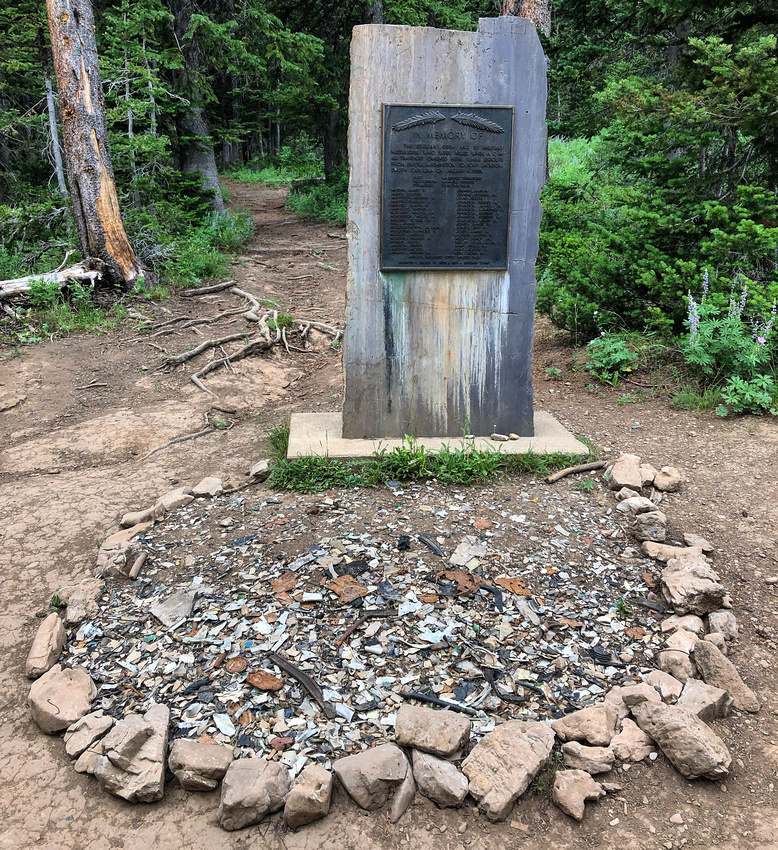

It is not really possible to explain the overwhelming sadness that accompanies a visit to Pat Hollow in the Bear River Mountains of Idaho. Well off the beaten path, amidst wildflowers, limber pine trees, mountain streams, squirrels, bears, and moose, the crash site of a C-46 military transport plane carrying thirty seven soldiers returning home from Korea is guarded by a lone granite monument as well as by the trees that were impacted by the aircraft so long ago. After over 65 years, much of the gruesome details have been lost to time and that is probably for the best. It was a heart wrenching accident that killed 37 young soldiers and the flight crew which included two pilots and one stewardess. In total, 40 young lives were lost on that fateful January 6, 1953 flight. All of the soldiers were returning home, most of them having served on the front lines in Korea. The young men were anxious to get back to family and loved ones they had been separated from for so long. All of the soldiers were thankful they had survived the war and were excited to be starting new chapters in their lives. Having dodged flying bullets, shrapnel, mortar fire, and grenades overseas, none of them expected the horrors of war to intercept them violently in the snowy mountains of Idaho - so close to home.
Flight 1-6-6A departed Seattle, Washington enroute to Fort Jackson, South Carolina extremely heavy and overloaded. The first stop for the journey home was scheduled as Cheyenne, Wyoming, but it never arrived. Severe turbulence and ice were identified in the accident report as probable causes for the crash. The C-46 was noted to be on a Northwesterly flight path before impact which implies that the pilots were trying to return to Milad, Idaho. There is really no way to know exactly what happened, but chances are the C-46 Commando encountered extreme icing conditions and with the combination of it’s already heavy weight, ice accumulation, and turbulence, it could not hold altitude.
For aviators, ice is nothing but an evil. It collects and builds on critical surfaces and components. In some conditions, it can accumulate very quickly - too quickly. Engines can choke on it while propellers lose efficiency. It destroys lift, adds weight, decreases thrust, and increases drag. And the longer the airframe is exposed to it, the worse it gets. It is the bane of aviation and requires immediate action. It is not acceptable to wait and do nothing.
Near the granite monument, there is an Eagle Scout project that has been erected. It provides more detailed information about the crash, and inspired the writing of this article and it’s title - the horrors of war.
After some time looking at the Eagle Scout project and the granite monument, my family and I worked our way up the hillside where the C-46 impacted the ground. We spent a half hour looking for shards of wreckage. There is very little left to find, but, surprisingly, my wife found a piece of aluminum from the C-46 aircraft. While I continued my own slow search along the wild flower carpeted and rock infested hillside, I started thinking about the horrors of war. Just the statement alone conjures up many unwelcome thoughts. Not only do battle unpleasantries come to mind, but war crimes and crimes against humanity charge into the forefront. Atrocities like the Holocaust, the Bataan Death March, and the Rape of Belgium slide out of their holes and, truly, make our skins crawl. How could Man be so evil? Sadly, there have been so many horrors in mankind’s history that, if nothing else, they have solidly demonstrated the fall and depravity of Man. Will it stop? Probably not, but it depends on what is in the heart of Man. Will Man turn his heart back to God?
In the Book of Jeremiah it is written that “The heart is deceitful above all things and beyond cure. Who can understand it?” (Jeremiah 17:9 NIV)
That scripture doesn’t bode well for those wanting world peace. Can’t we all just get along? No, because evil lurks in the shadowy hearts of some, and it doesn’t care about laws, human rights, or human life. It is very likely that evil will rise again and good men and women will be called upon to battle it. Much like flying into icing conditions, action must be taken or everyone on board the flight loses. It is simply inexcusable to do nothing. The parliamentarian Edmund Burke has often been attributed with the statement; “All that is necessary for evil to triumph in the world is for enough good men to do nothing." How apropos!
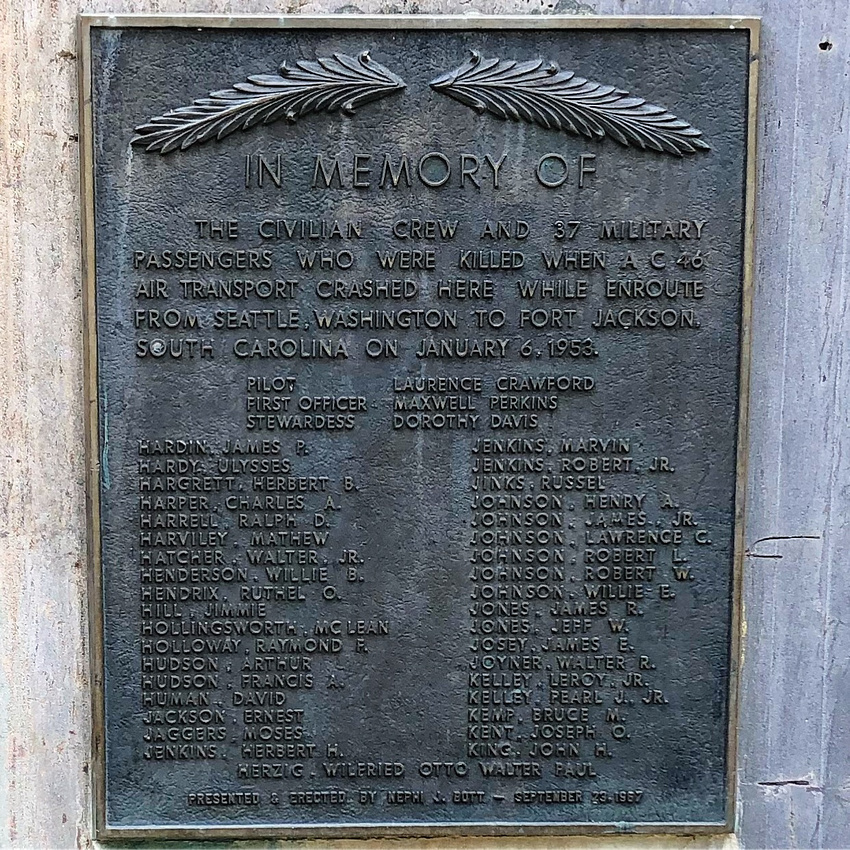

All forty names of those lost on Flight 1-6-6A are etched in the granite monument. Below the monument is a perimeter of stones that encircle bits and pieces of wreckage that people have found over the years. To add to the collection is just another way to honor and remember those that answered the call to stand against evil and bravely defend our freedoms.
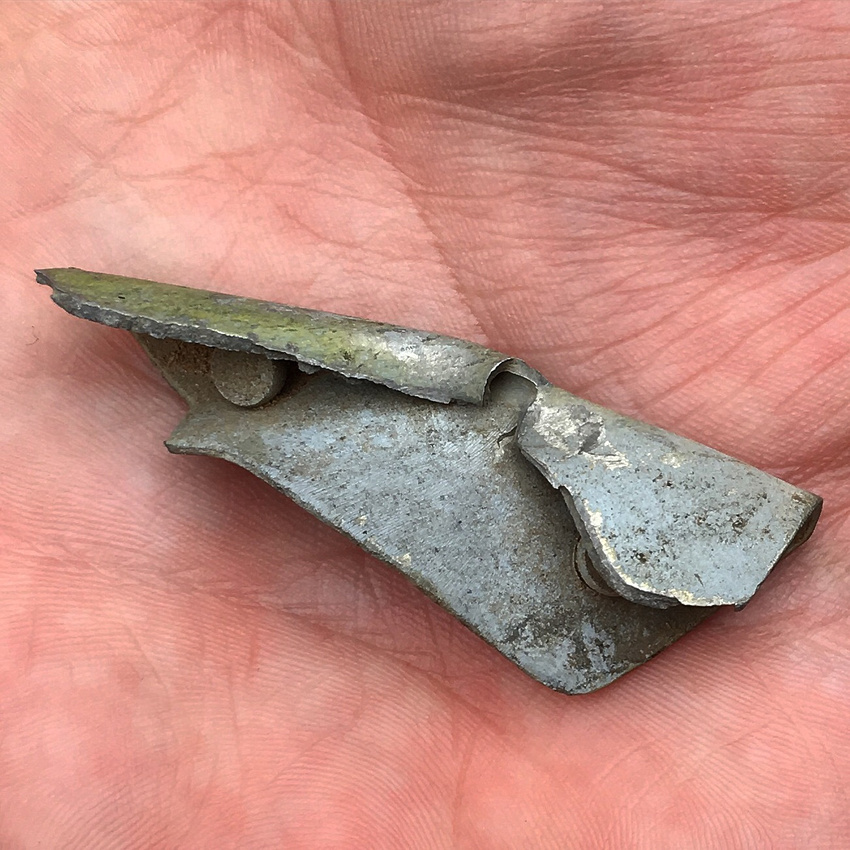

My wife took a picture of the fragment of metal that she had found and then let it drop with a “clink” into the collection at the base of the monument. It was a fitting end to our visit.
It is a terrible thing - the horrors of war, but an even worse thing, in my opinion, is the inaction of good men and women to stand against evil. Over time, the horrors of war have a tendency to scar over and fade from memory, but remembering those who have fought and died battling evil should never fade. They faced the horrors of war so that we didn’t have to. That honor should last forever!
Until Next Time
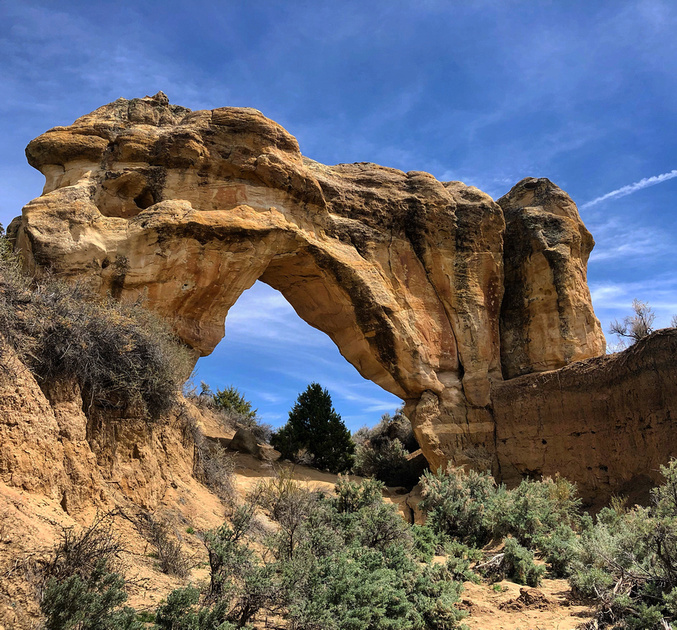

Until Next Time
I swallowed hard as I silently acknowledged my predicament. I wanted to run. In fact, every nerve in my body exploded with the flight response, but both fear and common sense anchored my feet. There was no way I could outrun him. And to turn and give him my back was suicidal. He had hunted me down superbly. I hadn’t known he was there until he was almost ready to attack. Like a ghost gliding through the forest, he had silently closed the distance. No sound. No twig snap. No over-turned rock or disturbed pebble. Not even a rustled leaf had betrayed his presence. He had demonstrated an epic stealthy approach. Now at seven yards, his claws fidgeted in and out of their sheaths. The tip of his tail whipped from side to side as he anticipated a quick clean kill. Gold-green eyes pierced my body as he targeted his point of attack. I, the hunter, had become the hunted.
It was a beautiful crisp fall morning in the high country of Colorado. I had started the day well before sunrise. In the dark, I had negotiated a trail up a drainage to reach an intercept point for a herd of elk. All along the way, I had entertained fanciful ideas that I would finally catch the herd bull unaware. I envisioned slipping an arrow into his chest, and successfully bringing a week of arduous archery hunting to a close. At no time during the hike did I imagine that I would become the prey. Funny how things work out.
I never saw the elk. I was close, but the herd had moved earlier than expected, and I had missed the intercept. I spent the rest of the morning sneaking up the drainage quipping a few cow calls along the way hoping to entice a satellite bull shadowing the herd. It was a great plan, until I got a really uncomfortable feeling. Ohhh, that gut wrenching feeling! It’s a feeling that starts deep in the core and oozes to the surface of the skin. It wiggles up the back leaving a rash of goosebumps along the spine, and then it spikes the neck and electrifies the hair. The neck hairs stand straight up like a bolt of lightning is about to strike. Some people call it the feeling of being watched. Others call it a sixth sense. No matter the reference term, it’s a feeling that really gets a person’s attention especially when alone in the woods. I’ve experienced it many times, but usually it is due to walking past an elk or deer that is burning holes through me with their laser-intense eyesight. I cringe every time because I know that I just blew the hunt. I know that when I turn around, my quarry will snort and explode in a frenzied panic never to be seen again, and I will begin the walk of shame. However, this time the feeling was much more intense. The cringe almost hurt. The feeling even wiggled all the way down into my toes. The immediate thought that something was strangely amiss blasted through my head. Then my brain threw all the red flags. Danger was afoot. A typical response for anyone with those feelings is to swivel around and check their six. That’s exactly what I did, and then I knew I had been obtusely naive. I was already trapped. Obviously, I needed to enhance and fine-tune my future situational awareness. Of course, that thought assumed I had a future. My fate hung in the balance pirouetting around on a single thread. I sickeningly saw two ears sticking above a large boulder directly behind me. I’m not the sharpest guy in the woods, but it didn’t take me long to identify my would-be attacker. The sneaky mountain lion had almost scored on me with extreme finality.
I would like to say that I stood stoically firm and tauntingly cried, “Bring it.” But this is not Hollywood and there was no calling in a stunt double. I was shaking at the knees and riddled with fear. I think my only cry was one with tears and, for additional emphasis, I verbally screamed like a little girl.
On the other hand, the brazen mountain lion had no fear. Once he realized that his presence was detected and that I refused to run, he eased around the boulder and closed the gap to twelve feet. We squared up on each other and had a good old-fashioned stare-down and stand-off.
In a scenario like that, time seems to slow down while thoughts speed up. I had many. It was one of the few times I wished that I was gun hunting instead of archery hunting. I remember wishing that I had a pistol on my person. I really wished I hadn’t been such an easy target. I strongly wished I had been more aware. I couldn’t believe the lion had gotten so close without me knowing. I came to full draw, but it would do me little good to prevent him from jumping on me. Twelve feet is nothing for a mountain lion. He was way too close. Honestly, I could better defend myself with my knife. I eased off full draw and pulled my knife out of it’s scabbard while still keeping my eyes locked with his. This was one staring contest that I refused to lose.
The tail of my adversary twitched back and forth as he sized me up and contemplated his next actions. Instinctively, he knew his advantage had slipped away when I faced him. He wanted a thrilling chase and epic takedown. He wanted to sink his teeth into the back of my neck with a stunning pounce. For him the thrill of the hunt had stagnated. Now, it was more about hunger level, sheer power, brute strength, and willingness to expend the energy. For me, it was all about survival and determination to stay upright.
This is a picture of a natural feature called Arch Rock. It’s really a natural bridge since a defined water course has obviously eroded through the rock and created the subject’s form. There are many arches/bridges throughout the world that are much more elegant, larger, and famous, but this particular bridge captured my attention and started spinning a story for me as I walked around it. In many places, Arch Rock is pockmarked with bullet holes and has experienced the pressure of being used as target practice. Sometimes, inspiration comes from some of the most obscure things. But that point aside, I should probably address the most pressing question before people actively describe me as non compos mentis. What does a picture of a natural bridge, and a story of a mountain lion encounter have to do with one another?
It all begins with the term erosion. Dependable old Webster defines erosion as, “The process of something being diminished or destroyed by degrees.” In the case of Arch Rock, a compromise in the structure with a continual attack of water and wind eventually removed cementing material exposing further weaknesses. Over time, water saturated those superficial cracks, joints, and fissures and then swinging temperatures added to the removal of material as ice formed and then melted. Water flow exaggerated the erosional affect, and, in due course, Arch Rock was born. As time marches forward, external factors including humans using Arch Rock as target practice add to it’s slow degradation. In the end, even the substantial form of Arch Rock will succumb to external pressures and erosion. Just like every other natural bridge/arch, Arch Rock will eventually collapse. It may take one thousand years, but it will fall, and, surprisingly, it’s demise started with a very small crack, fissure, or chink in the armor.
Every time I see an arch, I am reminded that erosion began where the rock was compromised. In the same way, it is when I compromise my standards and faith that I allow the Devil to find a crack. Satan wants me to compromise, and then he can begin to erode my faith through that weakness. It is very subtle and slow, but eventually the Devil gets deeper. Then the Devil attacks everything that is of foundational value. Family, friends, finances, and health become targets. If Satan can get deep enough, nothing is off limits. Usually, just like with natural erosion, the process takes time. It is a slow fade. First, maybe we quit praying. Then we quit reading the Bible. Then we quit going to church. Then we start hanging with the “wrong” people. Maybe then, we get used as “target practice” by our so-called friends. And then even close “family” join the shoot. All along the way, we surrender pieces of our relationship with God. Little by little, we veer off course and our Christian walk becomes a stumbling bushwhacking affair through the jungle. Yet, the Devil keeps circling and launching attacks. There is no reprieve. Full penetration is what he seeks. The Devil is a master at exploiting our weaknesses and finding the chinks in our armor. He wiggles in deep and expands making the crack bigger. Similar to erosion, it is a process that, given time, will collapse our faith and sabotage all that we hold dear.
“Stay alert! Watch out for your great enemy, the devil. He prowls around like a roaring lion, looking for someone to devour. Stand firm against him, and be strong in your faith. Remember that your family of believers all over the world is going through the same kind of suffering you are.”
1 Peter 5:8-9 NLT
I still have dreams about that close encounter with the mountain lion. The lions’ black cratered pupils surrounded by fiery lakes of greenish-gold magma hauntingly erupt through my soul. His tail sweeps from side to side as the tip twitches in anticipation. His muscles ripple under his tawny hide, itching to explode with lightning speed. He dares me to run. He dares me to drop my guard. He patiently awaits to exploit my weaknesses. I stand firm, but shake on the inside hoping that he doesn’t sense my fear. I scream, “Back away!” He tilts his head, lays his ears against his skull, and then hisses, “Until, next time!”. He glides off into the forest as stealthily as he approached. In three steps, he has vanished amidst the trees and shrubs. Then I wake up with my right hand cramping. The death grip on my imaginary knife is very real. So is the adrenaline laced blood pumping through my veins and the cold sweat beading on my skin. “Next time,” I mumble with dread and a slight pause, “I’ll have a gun.”
The Devil is constantly on the prowl. Erosion of our faith and external pressures on our faith are constantly being applied. The world is full of traps and deception. Danger lurks everywhere. When the Devil finds us alone, he will examine the depth of our weakness. If it’s deep enough, he will attack the core. If it’s not, he will let erosion continue while he circles around for the next time. There is but one thing that stops the disturbing trend of “until next time”. It is the proverbial “gun at a knife fight”. It is our faith.
Unfortunately, faith is not an absolute in our lives. That is to say, that once obtained, faith does not boldly remain and never diminish. It must be nurtured and tended. Like a flower, it must be watered and given sunlight. Our faith comes from hearing the Good News about Christ and by keeping our eyes fixed on Christ who is the author and perfecter of our faith. Accordingly then, our faith must be supplemented with the application of prayer, worship, and Bible study. The Book of Second Peter advises supplements to our faith of virtue, knowledge, self-control, steadfastness, and brotherly love. We, therefore, grow our faith by maturing as Christians and pursuing a relationship with God. We will never be perfect, and it won’t always be easy. Nevertheless, we must pick up our cross daily and defend ourselves and our family against the prowling Devil because he never stops searching for that erosional weakness.
Keep and grow the faith. Stymie the compromise lest we fall. Hold onto the faith and wield it boldly because the hunt is on, and we are the prey. Until, next time!